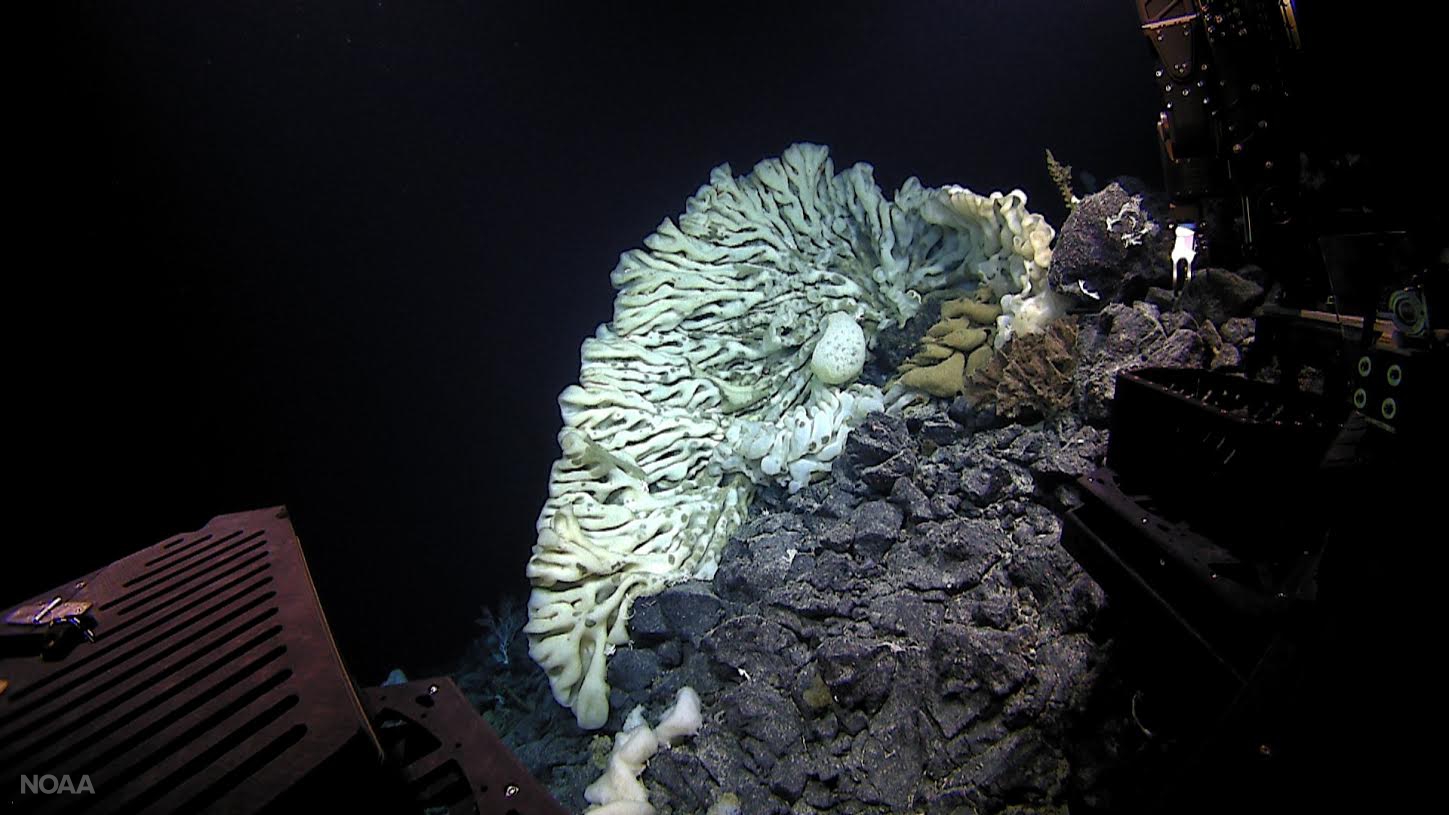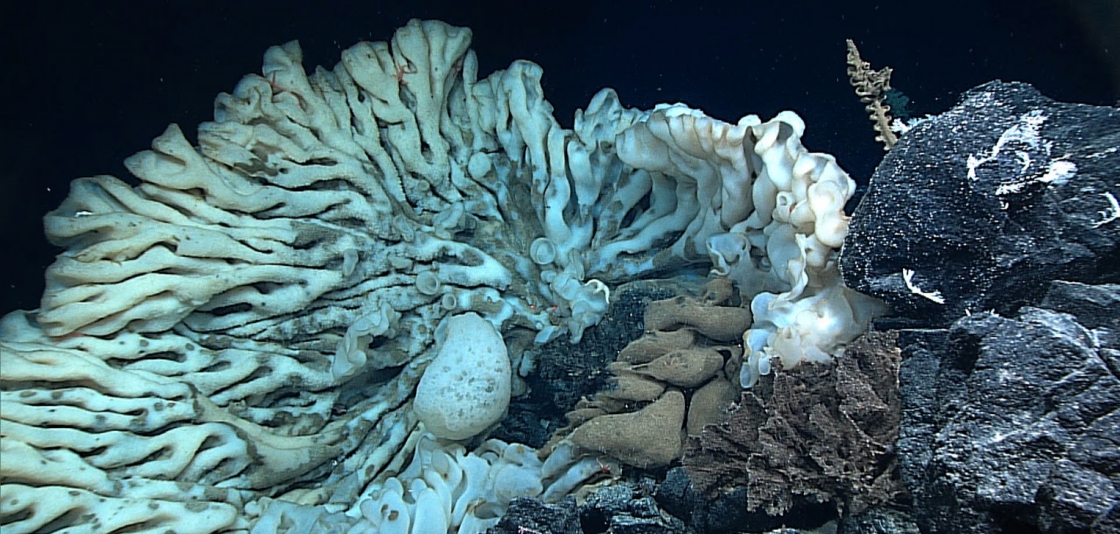Supersponge the Size of a Minivan Found Near Hawaii

An unusual sponge was spotted making waves in waters near the Hawaiian Islands — though it doesn't wear square pants and is far too big to live in a pineapple under the sea.
The massive sponge — a marine animal with no skeleton and a soft, porous body — is the largest on record, researchers reported in a study. Identified as measuring approximately 12 feet (3.5 meters) in length and 7 feet (2.1 m) in height, the minivan-size creature was discovered at a depth of 7,000 feet (2,134 m) during dives by a remotely operated vehicle (ROV) system, which was deployed from the ship Okeanos Explorer by the National Oceanic and Atmospheric Administration (NOAA).
And according to the scientists, the sponge's unusual size could suggest that it might be capable of living for thousands of years. [The 12 Weirdest Animal Discoveries]
During the 69-day expedition, which extended from July 10 through Sept. 30, 2015, scientists investigated deep-sea ecosystems in Papahānaumokuākea Marine National Monument and the Johnston Atoll Unit of the Pacific Remote Islands Marine National Monument.
NOAA scientists published a description of their giant discovery on May 24 in the journal Marine Biodiversity, saying that the sponge's dimensions exceeded those of the largest specimens reported in earlier studies.
Previously, the largest known sponges were a colony of the species Aphrocallistes vastus, found in shallow waters near Canada and measuring about 11 feet (3.4 m) in length and about 4 feet (1.1 m) in height.
The solitary but sizable sponge was not a reef builder, the scientists noted in the study. They obtained a sample from a smaller specimen in a nearby location, which they suspected to be the same species as the giant sponge. But those were the only individuals of this type of sponge that the scientists encountered in the 18 ROV dives that were completed during the expedition.
Get the world’s most fascinating discoveries delivered straight to your inbox.
There is much about sponges' life spans that science has not yet discovered. But very large sponges living in shallow waters have been estimated to live for more than 2,300 years, which hints that this giant — "and presumably old" — specimen could be equally long-lived, according to the study authors.
Sponges filter seawater, and an enormous individual such as this one likely plays an important role in preserving its ecosystem. Its discovery emphasizes the necessity of exploring deep-water environments, and how much still remains to be learned from them, the scientists said in the study.
Original article on Live Science.

Mindy Weisberger is a science journalist and author of "Rise of the Zombie Bugs: The Surprising Science of Parasitic Mind-Control" (Hopkins Press). She formerly edited for Scholastic and was a channel editor and senior writer for Live Science. She has reported on general science, covering climate change, paleontology, biology and space. Mindy studied film at Columbia University; prior to LS, she produced, wrote and directed media for the American Museum of Natural History in NYC. Her videos about dinosaurs, astrophysics, biodiversity and evolution appear in museums and science centers worldwide, earning awards such as the CINE Golden Eagle and the Communicator Award of Excellence. Her writing has also appeared in Scientific American, The Washington Post, How It Works Magazine and CNN.



